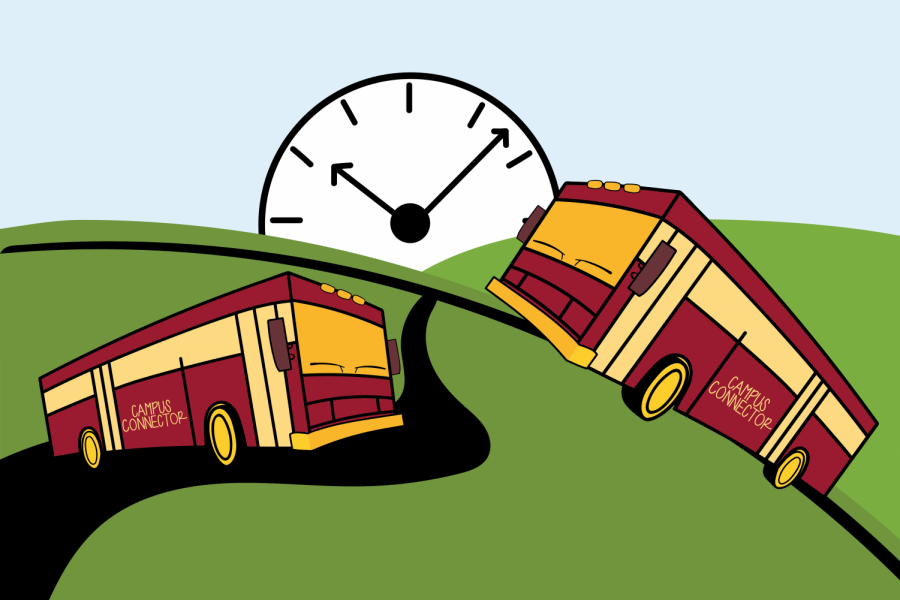The University of Minnesota Parking and Transportation Services (PTS) is improving the GopherTrip app, following student concerns of buses running off-schedule and inaccuracy on the app.
Since 2017, the GopherTrip app has displayed information for student users about campus bus arrival times, locations and capacities. Recently, the app has displayed incorrect schedules or arrival times, making it difficult for students commuting around campus, according to Jacqueline Bass, a spokesperson from PTS.
Now, PTS is meeting with software developers to provide up-to-date information and schedules to ensure bus routes and arrival times are displaying correctly. With the recent hiring of more drivers and warmer weather, the buses should begin to meet expected arrival times, according to Lonetta Hanson, administrative services assistant director and chief of staff of PTS.
“I’ve stopped using the app because sometimes it will take 20 or more minutes for a bus and other times, there will be two that arrive back to back,” University second-year student Hope Werstler said.
In the past month, PTS also hired more drivers to increase the number of buses available. The University has struggled to retain drivers throughout the past few years, Hanson said.
“I understand that it can be off by a minute or two from the schedule because of traffic, but when they show a bus coming up in the app but it doesn’t show up in time it is frustrating,” recent University alum João Esteves said.
The GopherTrip application displays five different routes that cover all three University campuses. Using this app can help students determine when to leave for classes, according to Hanson.
Buses are tracked using a GPS-based system activated by drivers when they begin their route. This information is viewed by PTS who can monitor bus routes and timing, Hanson said.
“Sometimes the GPS unit is disconnected or drivers don’t turn it on, but dispatchers and supervisors can catch this,” Hanson said. “If we see only four buses on the app showing up but there are eight running, we communicate with drivers to fix the issue.”
Although the driver shortage has made it difficult for PTS to have a full fleet of buses available on routes, other factors such as delays when refreshing the app, traffic changes and weather can cause arrival time estimations to be inaccurate, Hanson said.
“So far this semester, I’ve noticed that the buses [specifically the campus connector] are very inconsistent,” Werstler said.
The complexity of the University’s various academic, weekday and weekend bus schedules have been a challenge for app programming developers because it is difficult to add these different schedules to the software system, Hanson said.
Not only does the schedule change during academic breaks, but the span of time between bus arrivals can vary from 5 to 20 minutes. Weekend schedules usually begin at 9:30 a.m. and end at 2 a.m., while they begin at 7:00 a.m. on weekdays.
“The routes themselves are great, especially the 121 and 122 going basically the same route but different directions, and the 122 would even run until 1 or 2 a.m.,” Esteves said.


















